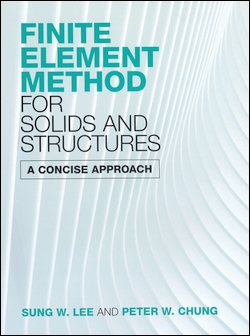書籍分類

Finite Element Method for Solids and Structures: A Concise Approach
作者:Sung W. Lee, Peter W. Chung
原價:NT$ 1,650
ISBN:9781108497091
版次:1
年份:2021
出版商:Cambridge University
頁數/規格:368頁/平裝單色
參考網頁:Finite Element Method for Solids and Structures
版次:1
年份:2021
出版商:Cambridge University
頁數/規格:368頁/平裝單色
參考網頁:Finite Element Method for Solids and Structures
內容介紹 目錄 作者介紹
- Description
- Balances textbook-based theory of the finite element method with in-depth exercises in code implementation and software-based analysis online to prepare students for the workplace
- Beginning with fundamentals, such as the governing equations for simple structural systems, guides students to understanding how mathematics can be applied to the development of finite element formulations
- MATLAB® program files provided online for many sample exercise problems, helping students to understand the finite element method without having to code from scratch
- Tutorial videos with detailed annotations and instructions provide students with self-guided learning using commercial software packages, empowering them to perform sophisticated analyses and build practical experience using industry-accepted tools
This innovative approach to teaching the finite element method blends theoretical, textbook-based learning with practical application using online and video resources. This hybrid teaching package features computational software such as MATLAB®, and tutorials presenting software applications such as PTC Creo Parametric, ANSYS APDL, ANSYS Workbench and SolidWorks, complete with detailed annotations and instructions so students can confidently develop hands-on experience. Suitable for senior undergraduate and graduate level classes, students will transition seamlessly between mathematical models and practical commercial software problems, empowering them to advance from basic differential equations to industry-standard modelling and analysis. Complete with over 120 end-of chapter problems and over 200 illustrations, this accessible reference will equip students with the tools they need to succeed in the workplace.
分類位置:
理工 > 機械工程 > 有限元素


